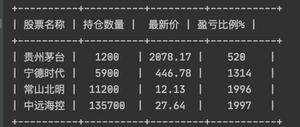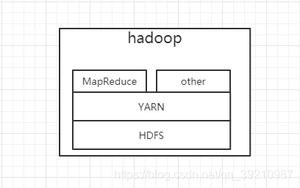【Python教程】Python 3 多线程
多线程类似于同时执行多个不同程序,多线程运行有如下优点:
- 使用线程可以把占据长时间的程序中的任务放到后台去处理。
- 用户界面可以更加吸引人,这样比如用户点击了一个按钮去触发某些事件的处理,可以弹出一个进度条来显示处理的进度
- 程序的运行速度可能加快
- 在一些等待的任务实现上如用户输入、文件读写和网络收发数据等,线程就比较有用了。在这种情况下我们可以释放一些珍贵的资源如内存占用等等。
线程在执行过程中与进程还是有区别的。每个独立的进程有一个程序运行的入口、顺序执行序列和程序的出口。但是线程不能够独立执行,必须依存在应用程序中,由应用程序提供多个线程执行控制。
每个线程都有他自己的一组CPU寄存器,称为线程的上下文,该上下文反映了线程上次运行该线程的CPU寄存器的状态。
指令指针和堆栈指针寄存器是线程上下文中两个最重要的寄存器,线程总是在进程得到上下文中运行的,这些地址都用于标志拥有线程的进程地址空间中的内存。
- 线程可以被抢占(中断)。
- 在其他线程正在运行时,线程可以暂时搁置(也称为睡眠) -- 这就是线程的退让。
Python3 线程中常用的两个模块为:
- _thread
- threading(推荐使用)
thread 模块已被废弃。用户可以使用 threading 模块代替。所以,在 Python3 中不能再使用"thread" 模块。为了兼容性,Python3 将 thread 重命名为 "_thread"。
python线程">开始学习Python线程
Python中使用线程有两种方式:函数或者用类来包装线程对象。
函数式:调用_thread模块中的start_new_thread()函数来产生新线程。语法如下:
thread.start_new_thread ( function, args[, kwargs] )参数说明:
- function - 线程函数。
- args - 传递给线程函数的参数,他必须是个tuple类型。
- kwargs - 可选参数。
示例
#!/usr/bin/python3import _thread
import time
# Define a function for the thread
def print_time( threadName, delay):
count = 0
while count < 5:
time.sleep(delay)
count += 1
print ("%s: %s" % ( threadName, time.ctime(time.time()) ))
# Create two threads as follows
try:
_thread.start_new_thread( print_time, ("Thread-1", 2, ) )
_thread.start_new_thread( print_time, ("Thread-2", 4, ) )
except:
print ("Error: unable to start thread")
while 1:
pass
上述代码执行结果
Thread-1: Fri Feb 19 09:41:39 2016Thread-2: Fri Feb 19 09:41:41 2016
Thread-1: Fri Feb 19 09:41:41 2016
Thread-1: Fri Feb 19 09:41:43 2016
Thread-2: Fri Feb 19 09:41:45 2016
Thread-1: Fri Feb 19 09:41:45 2016
Thread-1: Fri Feb 19 09:41:47 2016
Thread-2: Fri Feb 19 09:41:49 2016
Thread-2: Fri Feb 19 09:41:53 2016
程序进入无限循环。你将不得不按 ctrl-c 停止
线程的结束一般依靠线程函数的自然结束;也可以在线程函数中调用thread.exit(),他抛出SystemExit exception,达到退出线程的目的。
线程模块
Python3 通过两个标准库 _thread 和 threading 提供对线程的支持。
_thread 提供了低级别的、原始的线程以及一个简单的锁,它相比于 threading 模块的功能还是比较有限的。
threading 模块除了包含 _thread 模块中的所有方法外,还提供的其他方法:
- threading.currentThread(): 返回当前的线程变量。
- threading.enumerate(): 返回一个包含正在运行的线程的list。正在运行指线程启动后、结束前,不包括启动前和终止后的线程。
- threading.activeCount(): 返回正在运行的线程数量,与len(threading.enumerate())有相同的结果。
除了使用方法外,线程模块同样提供了Thread类来处理线程,Thread类提供了以下方法:
- run(): 用以表示线程活动的方法。
- start():启动线程活动。
- join([time]): 等待至线程中止。这阻塞调用线程直至线程的join() 方法被调用中止-正常退出或者抛出未处理的异常-或者是可选的超时发生。
- isAlive(): 返回线程是否活动的。
- getName(): 返回线程名。
- setName(): 设置线程名。
使用threading模块创建线程
使用Threading模块创建线程,直接从threading.Thread继承,然后重写__init__方法和run方法:
示例
#!/usr/bin/python3import threading
import time
exitFlag = 0
class myThread (threading.Thread):
def __init__(self, threadID, name, counter):
threading.Thread.__init__(self)
self.threadID = threadID
self.name = name
self.counter = counter
def run(self):
print ("Starting " + self.name)
print_time(self.name, self.counter, 5)
print ("Exiting " + self.name)
def print_time(threadName, delay, counter):
while counter:
if exitFlag:
threadName.exit()
time.sleep(delay)
print ("%s: %s" % (threadName, time.ctime(time.time())))
counter -= 1
# Create new threads
thread1 = myThread(1, "Thread-1", 1)
thread2 = myThread(2, "Thread-2", 2)
# Start new Threads
thread1.start()
thread2.start()
thread1.join()
thread2.join()
print ("Exiting Main Thread")
上述代码执行结果如下:
Starting Thread-1Starting Thread-2
Thread-1: Fri Feb 19 10:00:21 2016
Thread-2: Fri Feb 19 10:00:22 2016
Thread-1: Fri Feb 19 10:00:22 2016
Thread-1: Fri Feb 19 10:00:23 2016
Thread-2: Fri Feb 19 10:00:24 2016
Thread-1: Fri Feb 19 10:00:24 2016
Thread-1: Fri Feb 19 10:00:25 2016
Exiting Thread-1
Thread-2: Fri Feb 19 10:00:26 2016
Thread-2: Fri Feb 19 10:00:28 2016
Thread-2: Fri Feb 19 10:00:30 2016
Exiting Thread-2
Exiting Main Thread
线程同步
如果多个线程共同对某个数据修改,则可能出现不可预料的结果,为了保证数据的正确性,需要对多个线程进行同步。
使用Thread对象的Lock和Rlock可以实现简单的线程同步,这两个对象都有acquire方法和release方法,对于那些需要每次只允许一个线程操作的数据,可以将其操作放到acquire和release方法之间。如下:
多线程的优势在于可以同时运行多个任务(至少感觉起来是这样)。但是当线程需要共享数据时,可能存在数据不同步的问题。
考虑这样一种情况:一个列表里所有元素都是0,线程"set"从后向前把所有元素改成1,而线程"print"负责从前往后读取列表并打印。
那么,可能线程"set"开始改的时候,线程"print"便来打印列表了,输出就成了一半0一半1,这就是数据的不同步。为了避免这种情况,引入了锁的概念。
锁有两种状态——锁定和未锁定。每当一个线程比如"set"要访问共享数据时,必须先获得锁定;如果已经有别的线程比如"print"获得锁定了,那么就让线程"set"暂停,也就是同步阻塞;等到线程"print"访问完毕,释放锁以后,再让线程"set"继续。
经过这样的处理,打印列表时要么全部输出0,要么全部输出1,不会再出现一半0一半1的尴尬场面。
示例
#!/usr/bin/python3import threading
import time
class myThread (threading.Thread):
def __init__(self, threadID, name, counter):
threading.Thread.__init__(self)
self.threadID = threadID
self.name = name
self.counter = counter
def run(self):
print ("Starting " + self.name)
# Get lock to synchronize threads
threadLock.acquire()
print_time(self.name, self.counter, 3)
# Free lock to release next thread
threadLock.release()
def print_time(threadName, delay, counter):
while counter:
time.sleep(delay)
print ("%s: %s" % (threadName, time.ctime(time.time())))
counter -= 1
threadLock = threading.Lock()
threads = []
# Create new threads
thread1 = myThread(1, "Thread-1", 1)
thread2 = myThread(2, "Thread-2", 2)
# Start new Threads
thread1.start()
thread2.start()
# Add threads to thread list
threads.append(thread1)
threads.append(thread2)
# Wait for all threads to complete
for t in threads:
t.join()
print ("Exiting Main Thread")
上述代码执行结果如下
Starting Thread-1Starting Thread-2
Thread-1: Fri Feb 19 10:04:14 2016
Thread-1: Fri Feb 19 10:04:15 2016
Thread-1: Fri Feb 19 10:04:16 2016
Thread-2: Fri Feb 19 10:04:18 2016
Thread-2: Fri Feb 19 10:04:20 2016
Thread-2: Fri Feb 19 10:04:22 2016
Exiting Main Thread
线程优先级队列( Queue)
Python的Queue模块中提供了同步的、线程安全的队列类,包括FIFO(先入先出)队列Queue,LIFO(后入先出)队列LifoQueue,和优先级队列PriorityQueue。这些队列都实现了锁原语,能够在多线程中直接使用。可以使用队列来实现线程间的同步。
Queue模块中的常用方法:
- Queue.qsize() 返回队列的大小
- Queue.empty() 如果队列为空,返回True,反之False
- Queue.full() 如果队列满了,返回True,反之False
- Queue.full 与 maxsize 大小对应
- Queue.get([block[, timeout]])获取队列,timeout等待时间
- Queue.get_nowait() 相当Queue.get(False)
- Queue.put(item) 写入队列,timeout等待时间
- Queue.put_nowait(item) 相当Queue.put(item, False)
- Queue.task_done() 在完成一项工作之后,Queue.task_done()函数向任务已经完成的队列发送一个信号
- Queue.join() 实际上意味着等到队列为空,再执行别的操作
示例
#!/usr/bin/python3import queue
import threading
import time
exitFlag = 0
class myThread (threading.Thread):
def __init__(self, threadID, name, q):
threading.Thread.__init__(self)
self.threadID = threadID
self.name = name
self.q = q
def run(self):
print ("Starting " + self.name)
process_data(self.name, self.q)
print ("Exiting " + self.name)
def process_data(threadName, q):
while not exitFlag:
queueLock.acquire()
if not workQueue.empty():
data = q.get()
queueLock.release()
print ("%s processing %s" % (threadName, data))
else:
queueLock.release()
time.sleep(1)
threadList = ["Thread-1", "Thread-2", "Thread-3"]
nameList = ["One", "Two", "Three", "Four", "Five"]
queueLock = threading.Lock()
workQueue = queue.Queue(10)
threads = []
threadID = 1
# Create new threads
for tName in threadList:
thread = myThread(threadID, tName, workQueue)
thread.start()
threads.append(thread)
threadID += 1
# Fill the queue
queueLock.acquire()
for word in nameList:
workQueue.put(word)
queueLock.release()
# Wait for queue to empty
while not workQueue.empty():
pass
# Notify threads it's time to exit
exitFlag = 1
# Wait for all threads to complete
for t in threads:
t.join()
print ("Exiting Main Thread")
上述代码执行结果如下:
Starting Thread-1Starting Thread-2
Starting Thread-3
Thread-1 processing One
Thread-2 processing Two
Thread-3 processing Three
Thread-1 processing Four
Thread-2 processing Five
Exiting Thread-3
Exiting Thread-1
Exiting Thread-2
Exiting Main Thread
本文转载自:迹忆客(https://www.jiyik.com)
以上是 【Python教程】Python 3 多线程 的全部内容, 来源链接: utcz.com/z/290454.html




